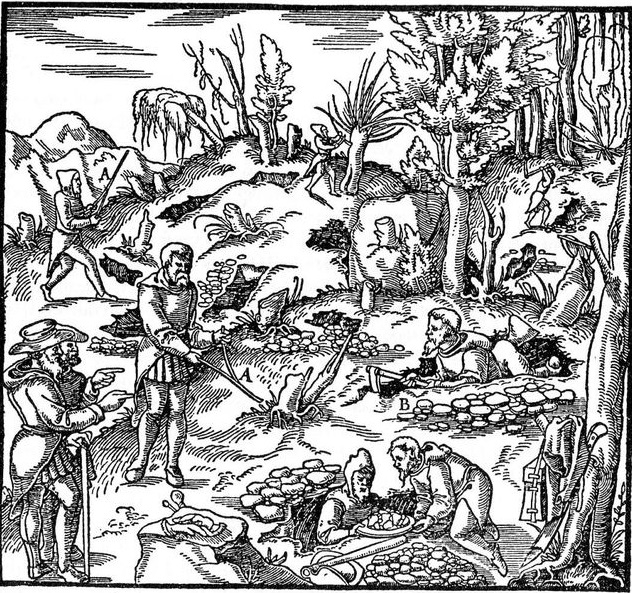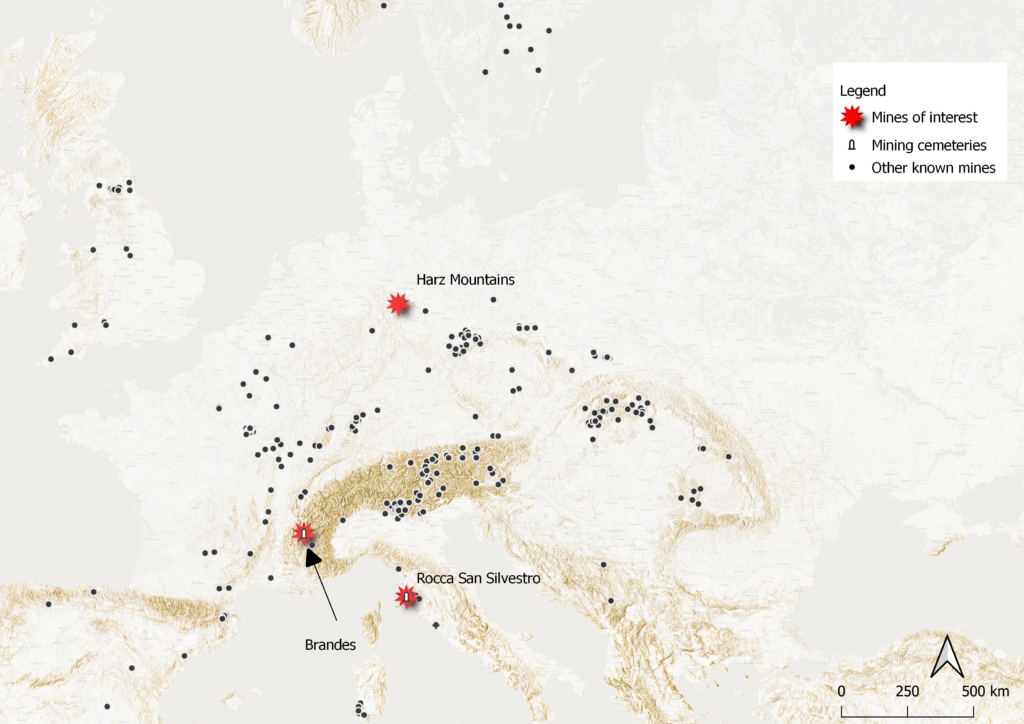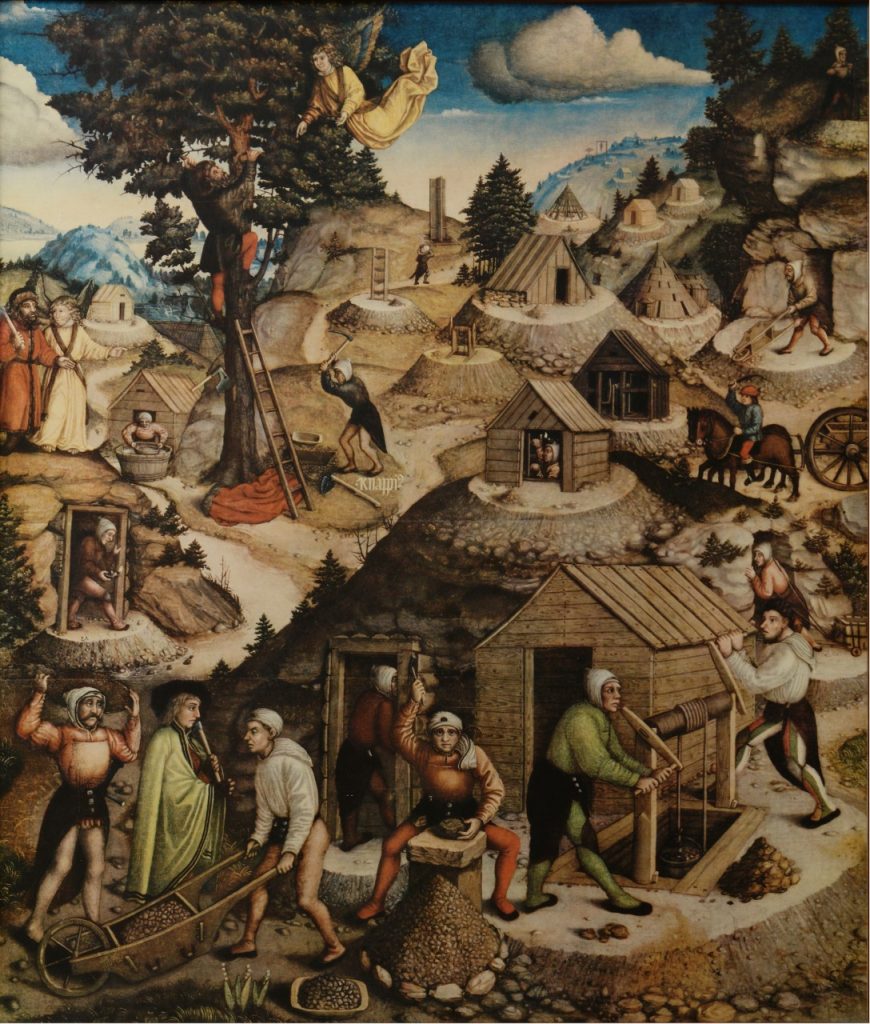Deakin Burwood Corporate Centre will hold their final CES stream event for the year: Unbounded Bodies, Dynamic Places: Biopolitics in the Preindustrial World, with Professor Guy Geltner on Tuesday 6 December 2022.
OVERVIEW (More details below)
Session 1*: Masterclass with Professor Guy Geltner (11:00am – 12:30 pm)
Catered Lunch (12:30 – 1:30 pm)
Session 2*: Talk and Film Screening with Professor Guy Geltner On the long history of extraction and the environment, and its relation to questions of geo- and biopower (1:30 – 3:30 pm)
*Please note the two sessions can be attended separately.
Register for in-person attendance via Eventbrite.
Register for online attendance via Zoom.
ABSTRACT
Is “premodern public health” inherently an oxymoron? This lecture shares insights from medical and social historiography to suggest that preventative-health interventions at the population level were both common and complex many centuries before the industrial revolution, centralised bureaucracies and biomedicine, the traditional triggers and enablers of public health. Sedentary and mobile groups across the Galenic world, from Dublin to Delhi, be they urban dwellers or roving armies, engaged in risk management and developed prophylactic programs to address their changing needs. Tracing how these programs were designed and enforced illuminates the negotiation of biopower and the influence of geopower in an era supposedly devoid of either. Moreover, interventions emphasised bodies’ plasticity and the interaction between individual bodies, groups and their moral/spiritual and material environment in ways that foreshadow recent discoveries in epigenetic research, albeit in a very different natural-philosophical paradigm. Collectively these insights challenge the conventional chronology, geography and periodisation in public health history.
SPEAKER BIO
Guy Geltner is a social and cultural historian of mining, public health, punishment and cities at the University of Amsterdam and Monash University. His most recent work concerns the history of public health and the environmental history of mining in Europe and among Galenic cultures more broadly. His articles, monographs and edited volumes have appeared in English, Italian, Dutch, French, Russian, Chinese, and Arabic, and contain work that has been supported by the Social Science Research Council, Hanadiv Foundation, the Netherlands Scientific Organization and the European Research Council. His current research focus is on premodern healthscaping. It traces preventative health theories, policies and practices among several types of populations rarely celebrated for their hygienic vigilance, including European cities, pilgrims, monasteries, and armies between 1200-1500. Working within the medical and natural[1]philosophical paradigms of their era, these groups fought to prevent and reduce all sorts of pollution, as numerous documents and instruments of practice attest.
ADDITIONAL DETAILS
Session 1: Masterclass with Professor Guy Geltner (11:00am – 12:30 pm)
Reading (two articles):
•Geltner, G. (2021):Kinetic health: ecologies and mobilities of prevention in Europe, c. 1100-1600 Mobilities, 16(4), 553-568
•G. Geltner & J. Coomans (2022): The healthscaping approach: Toward a global history of early public health, DOI: 10.1080/01615440.2022.2128487
Session 2: Talk and Film Screening with Professor Guy Geltner On the long history of extraction and the environment, and its relation to questions of geo- and biopower (1:30 – 3:30 pm)
Building on but distinct from the previous session, we will briefly introduce and later discuss Jean Queyrat’s striking and award-winning documentary La Mine du Diable (2011; English dubbing). It follows a young miner named Eduardo through the hardships of working and living near the ancient silver-extraction site of Potosí (Cerro Rico/Sumaq urqu), in present-day Bolivia. The site was allegedly discovered by the Spanish in 1545, just in time to relieve Europe from its silver scarcity and by resorting to extraction techniques and labor regimes that went back centuries, including in terms of their preventative healthcare. Its legacy as the “man-eating mountain” demonstrates the a-synchronicity of modernisation or the morphing manifestations of colonialism, but it also provides a case study in the history of geopower.
Viewing time is 52 minutes.
Recommended reading on Potosí and (Post) Colonial Mining in the Andes
•Jason Moore, “‘This Loft Mountain of Silver Could Conquer the Whole World’: Potosí and the Political Ecology of Underdevelopment, 1545-1800,” The Journal of Philosophical Economics 4.1 (2010), 58-103, available here.
•Heidi V. Scott, “The Contested Spaces of the Subterranean: Colonial Governmentality, Mining and the Mita in Early Spanish Peru,” Journal of Latin American Geography 11 (2012), 5-33
•Allison Margaret Bigelow, “Women, Men and the Legal Languages of Mining in the Colonial Andes,” Ethnohistory 63 (2016), 351-80
•Rossana Barragán Romano, “Dynamics of Continuity and Change: Shifts. In Labour Relations in the Potosí Mines (1680-1812),” International Review of Social History 61 (2016), 93-114
•Eadem, “Potosí’s Silver and the Global World of Trade (Sixteenth to Eighteenth Centuries,” in On the Road to Global Labour History, ed. Karl-Heinz Roth (Leiden: Brill, 2017), 61-92
•Eadem, “Working Silver for the World: Mining Labor and Popular Economy in Colonial Potosí,” Hispanic American Historical Review 97 (2017), 193-222
•Eadem, “Extractive Economy and Institutions? Technology, Labour, and Land in Potosí, the Sixteenth to the Eighteenth Century,” in Colonialism, Institutional Change, and Shifts in Global Labour Relations, ed. Karin Hofmeester and Pim de Zwart (Amsterdam: Amsterdam University Press, 2018), 207-38



